If you’re looking for a tattoo design that’s both controversial and daring, then a devil tattoo may be the perfect choice. With its association with darkness, rebellion, and evil, this type of tattoo is not for the faint-hearted. But what exactly does a devil tattoo mean? In this article with Impeccable Nest, we’ll explore the symbolism behind this powerful image and offer some advice on how to use it effectively.

The Symbolism and Meaning of Devil Tattoos
There are a few common symbolic meanings associated with devil tattoos:
Rebellion and Nonconformity
Devil tattoos have been a popular symbol in tattoo culture for many years. The meaning behind these tattoos is often associated with rebellion and opposition to religious authority. In religious texts, the devil, also known as Satan or Lucifer, is portrayed as a fallen angel who defied God and was cast out of heaven.
The devil has long been depicted as a mischievous and malevolent creature who tempts humans to give in to their sinful desires. Many people who choose to get devil tattoos do so as a way of expressing their own rebellious spirit and embracing their darker side. For some, this may be a way of rejecting social norms and societal expectations, while for others it may simply be an expression of their individuality and unique perspective on life.
One of the reasons why devil tattoos are so popular is that they can be designed in a variety of different ways. Some people opt for simple black and white designs, while others choose more intricate and colorful depictions of the devil. Devil tattoos can feature the devil himself, or other related symbols such as demons, flames, pitchforks, or horns.
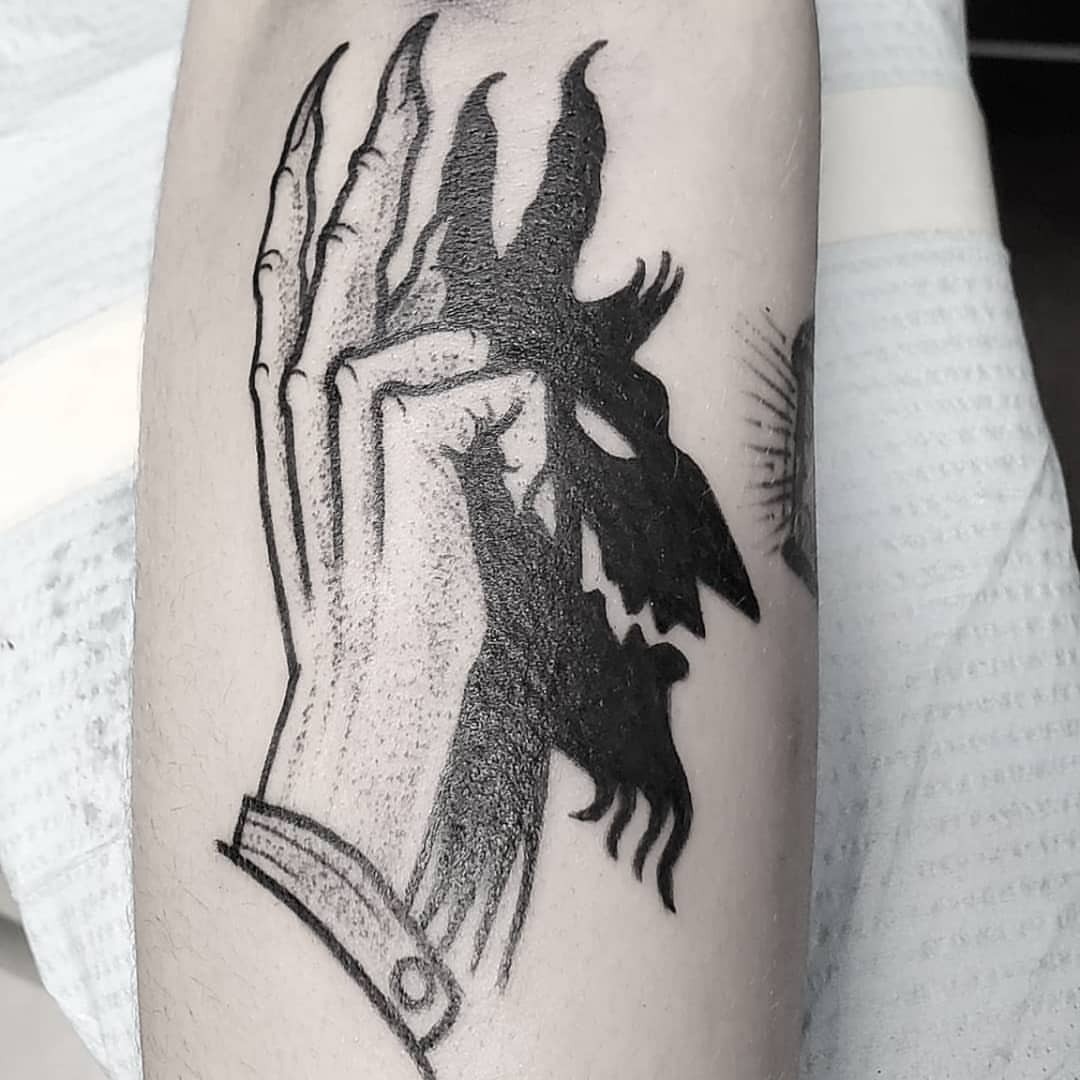
While devil tattoos have a reputation for being associated with negative connotations, they can also represent positive traits such as strength, resilience, and defiance. By embracing the devil as a symbol of rebellion, tattoo wearers can show that they are not afraid to challenge authority and stand up for what they believe in.
Of course, devil tattoos are not for everyone. Some people may feel uncomfortable with the idea of permanently branding themselves with such a controversial symbol. It’s important to carefully consider the potential meanings and implications of any tattoo design before getting inked.
In conclusion, devil tattoos remain a popular choice for those looking to express their rebellious spirit and individuality. Whether viewed as a symbol of opposition to religious authority or an expression of inner strength and resilience, devil tattoos continue to captivate the imagination of tattoo enthusiasts around the world.
Connected to Danger, Risk-Taking and Living on the Edge
Devil tattoos are a popular choice for those who wish to display their love for the thrill and excitement of life. The devil has long been associated with taking risks, living dangerously, and embracing vice, making it an ideal symbol for those who feel that they live outside the boundaries of normal society. The design of the devil tattoo can vary widely, from a small, simple image of the devil’s horns or tail, to a full sleeve tattoo depicting a battle between angels and demons.
For many people, especially those in counterculture groups such as motorcycle clubs, the devil tattoo represents their wild lifestyle. These individuals often see themselves as rebels, living on the edge of what is socially acceptable. They may view mainstream society as boring and conformist, and relish the chance to challenge convention and break the rules. The devil tattoo serves as a symbol of this rebellious spirit, indicating to others that they too are part of a community of like-minded individuals who reject traditional values and embrace the freedom to live life on their own terms.
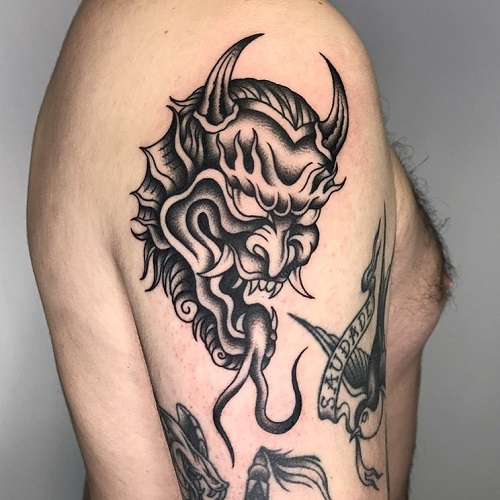
As with any tattoo, the meaning of a devil tattoo can vary significantly depending on the individual who wears it. Some may view it as a way of celebrating their wild side and rejecting societal norms, while others may see it as a reminder of the constant struggle between good and evil. Regardless of the specific meaning, the devil tattoo remains a popular choice for those who crave excitement, adventure, and a little bit of danger in their lives.
Power and Control
The devil is a widely recognized symbol of evil and darkness in many cultures around the world. It is often associated with negative traits such as temptation, deception, and destruction. However, some individuals choose to embrace this icon by getting devil tattoos.
For those who opt for a devil tattoo, it often represents their desire for power and control over others. People who choose this design want to project an image of strength and authority, and show that they are not to be crossed. The devil tattoo can serve as a reminder to the wearer to stand firm in their beliefs and not let others dictate their actions.
In some cases, people may get a devil tattoo as a form of rebellion against societal norms and expectations. They may feel that the traditional notions of good and evil are too restrictive and seek to express their individuality through this provocative design.
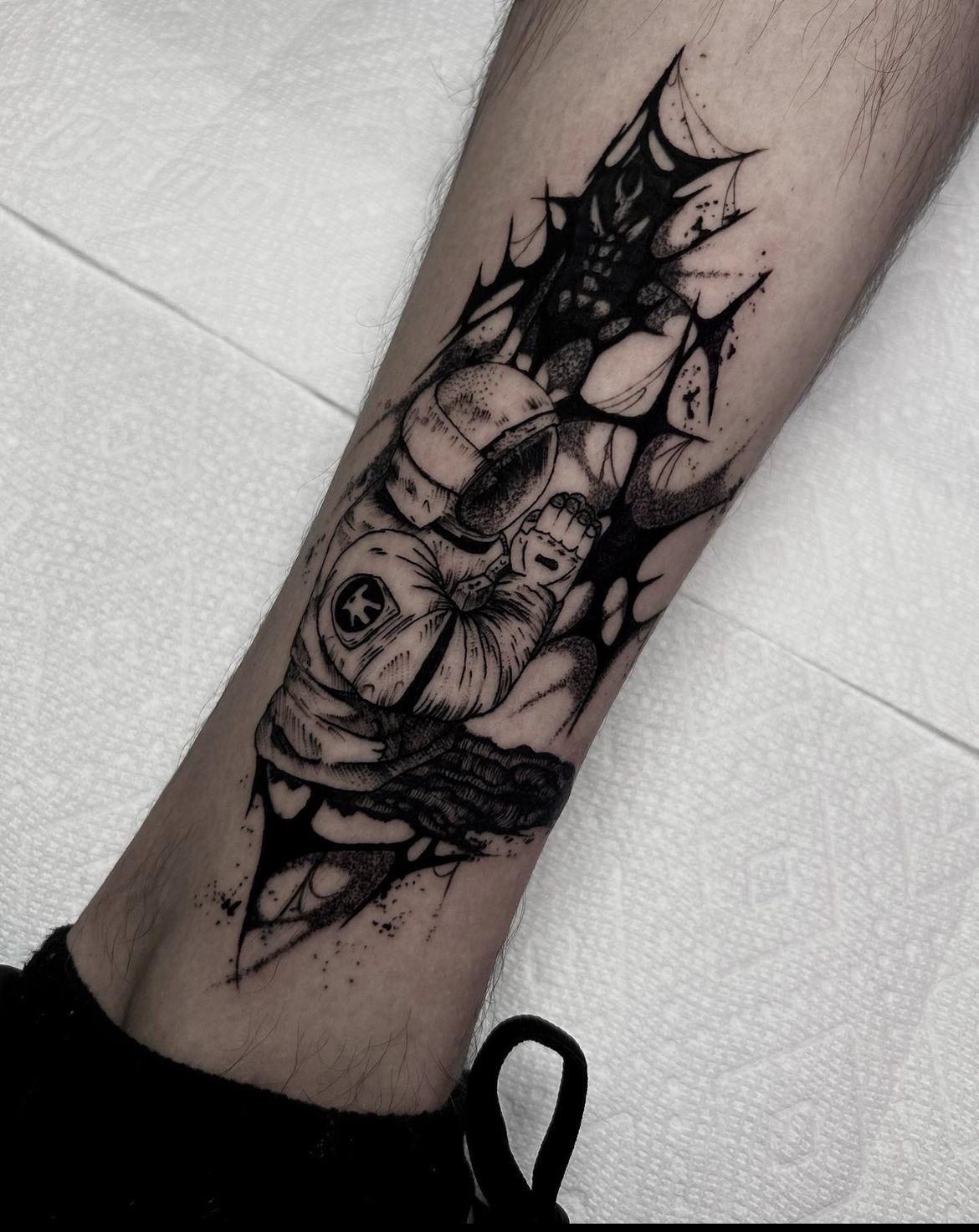
Regardless of the specific meaning behind a devil tattoo, it is important to consider the potential social implications of such a design. Some people may view the wearer of a devil tattoo as threatening or dangerous, which could lead to negative reactions or even discrimination.
In conclusion, the devil tattoo represents various meanings based on personal beliefs and cultural associations. While it can symbolize rebellion and a desire for power and control, it is important to consider the potential social consequences of displaying such a provocative design. Ultimately, the decision to get a devil tattoo should be made carefully and with thoughtful consideration of its potential impact.
Protection from Evil and Bad Luck
The devil tattoo is a highly controversial and often misunderstood symbol. It has long been associated with evil, temptation, and darkness. However, interestingly, in some cultures, it carries a different meaning. Unlike the Western culture, where the devil is mostly seen as a malevolent entity, in India and Southeast Asia, the devil is sometimes viewed as a powerful protector against malevolent spirits and ill-fated events.
In Hinduism, for example, the goddess Kali is often depicted as a demonic figure with multiple arms, wielding weapons, and standing on a corpse. She is revered as a fierce protector of her followers and a destroyer of evil forces. Similarly, in Thai folklore, the demon known as Pee Ta Khon is believed to ward off bad luck and protect against malevolent spirits. In both instances, the devil is not necessarily a source of fear, but rather a force of protection and empowerment.
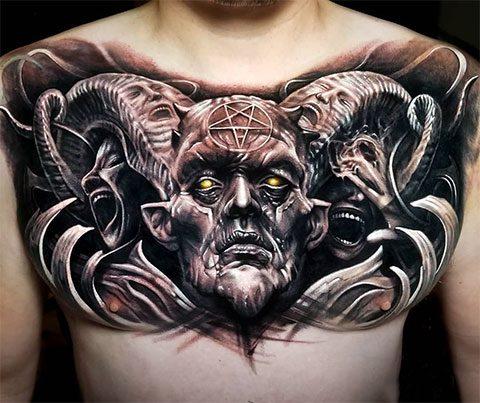
It is important to note that the devil tattoo does not hold this meaning across all cultures. In many cases, it is still interpreted as a symbol of rebellion, danger, and evil. Moreover, it can be seen as offensive and disrespectful to those who hold religious or cultural beliefs that view the devil in a negative light.
For those who do choose to get a devil tattoo, it is crucial to understand its significance and context. Additionally, it is essential to consider the potential consequences of carrying such a symbol, particularly in contexts where it may be perceived negatively.
All in all, the devil tattoo meaning varies greatly depending on the cultural context and personal belief systems. While it may represent power, strength, and protection in some cultures, it is important to approach the symbol with sensitivity and respect.
Connection to Sin and Immorality
However, the meaning of a devil tattoo can go beyond its surface level interpretation. The concept of the devil has been explored in various cultures and religions throughout history, and there are many different interpretations and beliefs surrounding it.
In some belief systems, the devil is seen as a symbol of rebellion against authority or societal norms. This interpretation can be found in literature and art, where the devil is often depicted as a figure that challenges the status quo and encourages individuals to question and challenge the rules and expectations placed upon them. For those who choose to get a devil tattoo with this meaning in mind, it may serve as a reminder to stay true to themselves and their beliefs, even if it means going against what is considered “normal” or “acceptable”.
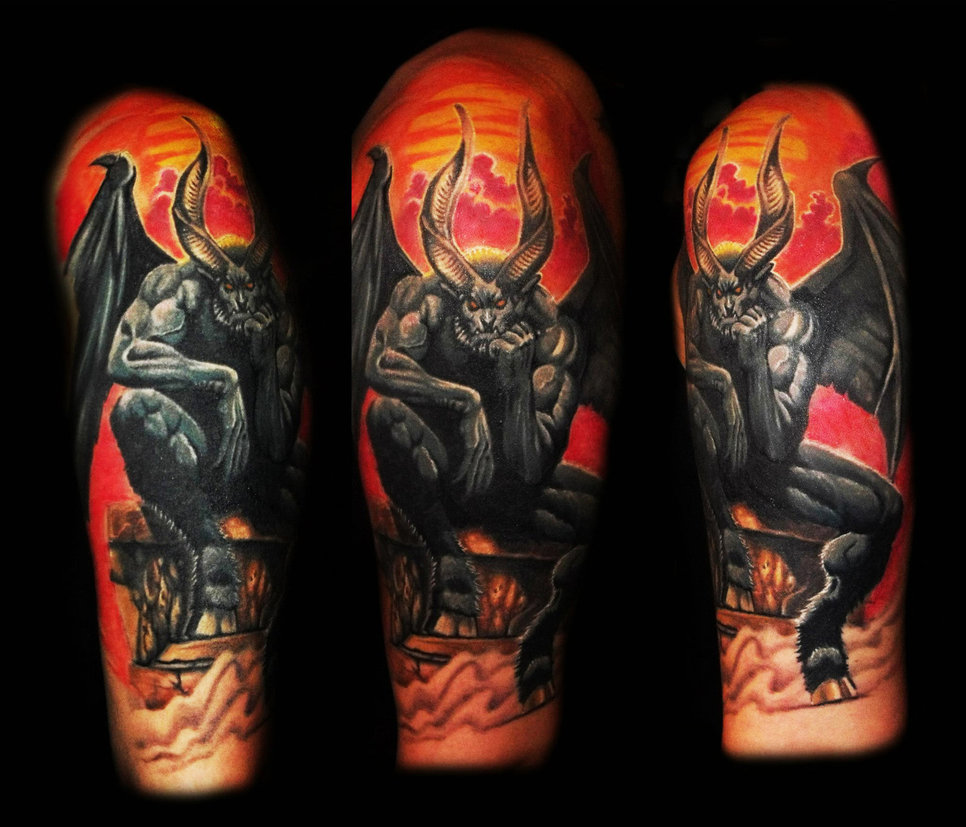
Another interpretation of the devil is as a representation of temptation and desire. In this context, the devil can be seen as an embodiment of our innermost desires and urges. A devil tattoo with this meaning could represent an individual’s struggle with temptation and their desire to indulge in life’s pleasures, even if they know it may have negative consequences. Alternatively, it could represent someone who has embraced their desires and indulges in them freely without fear of judgment or consequence.
For some, the devil is also associated with personal transformation and growth. The devil is often portrayed as a trickster figure who challenges individuals to confront their fears and weaknesses in order to overcome them and grow stronger. In this context, a devil tattoo could represent an individual’s willingness to face their demons head-on and emerge from the experience stronger and wiser.
Ultimately, the meaning behind a devil tattoo is highly personal and can vary greatly depending on the individual’s beliefs, experiences, and motivations. While some may view it as a symbol of evil and immorality, others may see it as a representation of rebellion, temptation, personal growth, or chaos. Regardless, getting a devil tattoo is a bold statement that requires careful consideration and an understanding of its deeper meanings and connotations.
Myth and Religion
The devil has long been a symbol of evil, temptation, and danger in many cultures and religions. In Christianity, the devil is often seen as a fallen angel who rebelled against God and was cast out of Heaven. However, for some, the devil represents much more than just a biblical figure. Devil tattoos are a popular choice among those who are fascinated by myths, legends, and occultism, and seek to embody the power and darkness of this archetypal figure.
To understand the meaning behind a devil tattoo, it’s important to first acknowledge the various interpretations of the devil. For some, the devil may represent rebellion against authority or societal norms. It may also symbolize temptation, lust, or desire – drawing from the idea of the devil as a seductive figure who lures people into sin. Others may view the devil as a representation of chaos or destruction. These individuals may find beauty in the devil’s ability to shatter conventions and create new paths.

For those who choose to get a devil tattoo, their reasoning can be multifaceted. Some may simply appreciate the aesthetic of the devil as a dark and powerful figure, while others may identify deeply with the symbolism attached to the devil. Some may have had personal experiences that led them to embrace the darker aspects of life, or they may feel drawn to the occult and supernatural.
It’s worth noting that not all devil tattoos are meant to be taken literally. Many tattoo enthusiasts view the devil as a mythological character rather than a literal embodiment of evil. As such, a devil tattoo may signify an interest in folklore, storytelling, and the power of imagination. For these individuals, the devil is simply a fascinating character in the vast tapestry of human mythology.
In conclusion, devil tattoos can hold a wide range of meanings depending on the individual wearing them. For some, they represent a fascination with mythology and the supernatural, while for others, they carry deeply personal symbolism related to rebellion, desire, or chaos. Regardless of the meaning behind a devil tattoo, it is important to approach the symbol with care and respect, acknowledging its complex history and the various interpretations that exist within different cultures and belief systems.
Examples of Devil Tattoo Designs
There are countless designs and variations of devil tattoos, ranging from traditional to contemporary styles. Here are some popular examples:
Devil Head
A devil head tattoo usually features a fierce-looking demon with horns and a menacing expression. This design is often chosen to represent power and dominance.
Devil Wings
Devil wings tattoos are typically located on the back, with the wings spreading out across the shoulders and down the spine. This design can be interpreted as a symbol of rebellion and freedom.
Devil and Angel
A devil and angel tattoo incorporates both light and dark elements, representing the duality of human nature. This design is often chosen to express a spiritual or philosophical perspective.
How to Use Devil Tattoo Meaning Effectively
If you’re considering getting a devil tattoo, there are a few things to keep in mind to ensure that you use its meaning effectively. Here are some tips:
Choose a Design That Resonates With You
The most important thing when choosing a tattoo design is to pick something that speaks to you on a personal level. Don’t just get a devil tattoo because it looks cool or edgy; make sure that it’s a meaningful representation of your values and beliefs.
Consider Placement and Size
Devil tattoos can be quite striking and attention-grabbing, so it’s important to consider placement and size carefully. If you want to keep your tattoo discreet, you may choose a smaller design on a less visible part of your body. On the other hand, if you want to make a bold statement, a larger tattoo on a prominent part of your body may be more appropriate.
Communicate Your Intentions Clearly
Because of its controversial nature, a devil tattoo may attract negative attention or misconceptions from others. To avoid misunderstandings, make sure to communicate clearly about your intentions behind the tattoo and what it means to you.
Placement for Devil Tattoos
Devil tattoos work well in almost any size and can be placed in a variety of locations:
- Chest – A medium or large chest tattoo makes a bold statement front and center.
- Full back – Gives room for an expansive, detailed devil design.
- Forearm – Easy to show off a forearm devil when desired.
- Calf – The shape of the calf nicely suits a tattoo of a devil standing.
- Upper arm – Allows room for a strong traditional devil head.
- Thigh – Ideal for a large sexy female devil or complex scene.
- Back of shoulder – A visible spot for a smaller design.
Where you place your devil tattoo affects its visibility and impression. Big, visible designs command more attention, while easily hidden spots allow discretion.
Conclusion
Devil tattoos offer a powerful way to exhibit defiance, live on the edge and aesthetically represent the shadow side of human nature. While they have an undeniably rebellious tone, the devil can symbolize much deeper meanings of fighting inner demons, embracing marginalized identities and mythological beliefs outside Christianity. Due to the iconic, vintage look of the traditional devil image, this tattoo continues to endure as a bold symbolic choice. With an appreciation for the nuances of devil tattoo symbolism, you can decide if this notoriously controversial design is the right fit for your ink.

I am Harvey Berry, a tattoo enthusiast who has immersed himself in the diverse world of ink, passionately exploring the beauty and artistry within each tattoo. My mission extends beyond uncovering the aesthetics of tattooing; it involves sharing in-depth knowledge across all aspects of this art form.
Fueled by genuine curiosity and love for every facet of tattooing, I have diligently crafted well-researched articles, with a special focus on the Tattoo Meaning of Impeccable Nest section. Here, my aim is to help the tattoo community gain a deeper understanding of the meanings and values embedded in each tattoo.
One of my primary goals is to encourage responsible decision-making when it comes to getting inked. I recognize that choosing to get a tattoo is a significant personal decision that requires careful consideration. Hence, I provide diverse resources covering the meaning of tattoos, the tattooing process, aftercare tips, and other valuable information.
Whether you are a seasoned tattoo enthusiast or embarking on your first exploration of the world of body art, I aspire to be a reliable resource for you at every step of your journey. I hope that my extensive knowledge of tattoos, especially in the Tattoo Meaning section, will assist you in finding inspiration to express yourself through the art of tattoos.
